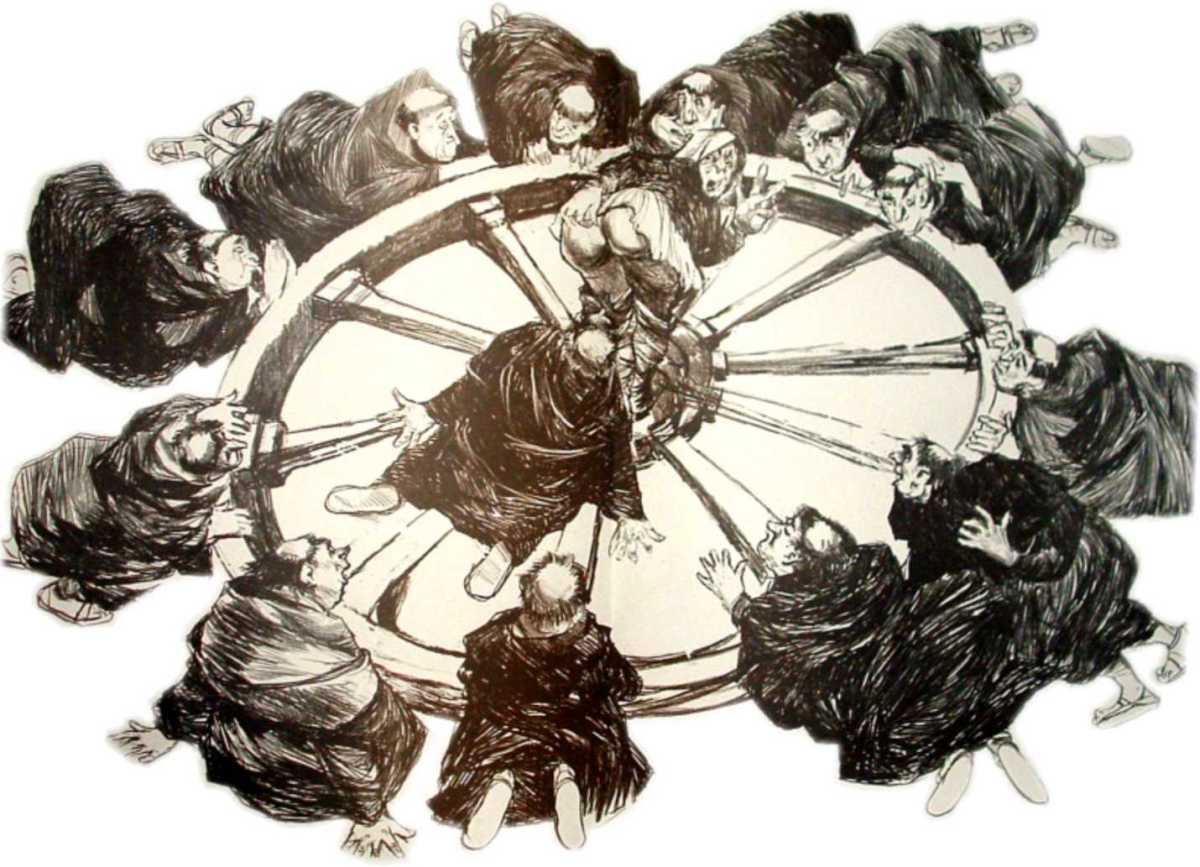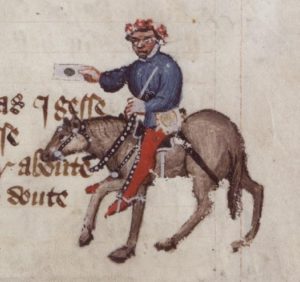[This post was written in the spring 2018 semester for Karrie Fuller's course on Chaucer’s Canterbury Tales. It responds to the prompt posted here.]

In films today, one of the simplest yet effective means of eliciting laughter is a fart. The Mel Brooks film Blazing Saddles features a scene with cowboys farting around a campfire after consuming beans. In “Step Brothers,” one character unleashes a long, loud fart during a job interview. Another example of fart humor in modern cinema is the dinner scene in “The Nutty Professor,” starring Eddie Murphy. Murphy plays several members of the Klump family who humorously pass gas at their dinner table. However, long before the advent of cinema, in Geoffrey Chaucer’s The Canterbury Tales, one of the collection’s more humorous works is told by the Summoner, who also uses a fart for comedic effect. By examining Chaucer’s use of a fart and the “Summoner’s Tale’s” discussion of how to divide a fart into twelve parts, we can begin to understand why fart jokes continue to make us laugh when used in cinema today.
In The Summoner’s Tale, a friar goes to the house of an ailing man, Thomas, to ask for a donation. He explains to Thomas that he will become better if he donates more, to which Thomas replies that he already donates plenty to the other friars who come to visit. The friar then attempts to manipulate Thomas, as friars and clergy were wont to do in Chaucer’s time, by giving him a sermon about the dangers of anger, before asking him again for a donation. Thomas replies that he can have a donation if he agrees to divide it equally amongst the other friars at the convent. When the friar agrees, Thomas has him reach around to his rear end, then unleashes a monstrous fart into the friar’s hands. The friar then goes to the lord of the village and explains the ordeal. The lord’s squire offers a solution for dividing a fart evenly: place each friar around a wheel, each at the end of one of the twelve spokes. Then, allow a fart to be released at the center of the wheel. The smell will then travel evenly along each spoke and to the nose of each friar.

The Summoner’s Tale can help reveal what it is about farts that continues to make us laugh at them in today’s films. One important element of The Summoner’s Tale is the repulsiveness of the fart. Prior to the release of the fart, Chaucer uses some graphic details to drive home the disgusting nature of what is about to happen: “And doun his hand he launcheth to the clifte, / In hope for to fynde there a yifte. / And whan this sike man felte this frere / Aboute his tuwel grope there and heere, / Amydde his hand he leet the frere a fart” (III, 2145-2149). The imagery of the friar reaching around Thomas’s anus alerts the reader that something of a foul nature is approaching in the narrative. The word “grope” also carries crass connotation, which, when associated with a friar, could produce a comedic effect. Another important detail is that the friar is hoping to find a gift as he reaches around. The fart is an insult in this situation, and it is humorous because of its rudeness. The friar expects money or something of value, and instead receives an obnoxious, odorous gas.
Similarly, farts in movies receive laughter partially because of their disgusting nature. The inappropriateness of a loud and odorous gas during something as important in our society as a job interview is enough to strike audiences as ridiculous. In the film “Step Brothers,” John C. Reilly’s character releases a noisy, prolonged fart in the middle of a job interview (McKay, Step Brothers). In modern society, a reasonable human would not expect such an obnoxious fart to come during such an important moment, just as the friar would not expect a fart when he believes he is about to receive a gift.
Chaucer goes beyond the use of a single fart for humor in The Summoner’s Tale. After the friar angrily takes his leave of Thomas, a squire explains a way in which a fart could be divided equally and shared amongst the friars of the convent, as Thomas intended. The squire explains that the spokes of a wheel can divide a fart so that each friar along the side of the wheel receives the same amount of gas: “By preeve which that is demonstratif / That equally the soun of it wol wende / And eke the stynk unto the spokes ende” (III, 2272-2274). This elaborate plan for the distribution of something as base as a fart most likely struck Chaucer’s audience as humorous. The idea of such a well-planned, complex method for mathematically distributing something being applied to a fart is so ridiculous that it is funny. Similarly, elaborate musings about flatulence entertain us in movies today. In the film “I Love You, Man,” Jason Segel’s character is very perceptive of when someone else is passing gas. His extreme observational skills relating to a man passing gas make for a humorous moment in the film (Hamburg, I Love You, Man).
Michael Doherty
University of Notre Dame
Works Cited
Brooks, Mel, director. Blazing Saddles. 1974.
Chaucer, Geoffrey, -1400.The Summoner’s Tale IIIfrom The Canterbury Tales.Ontario: Boenig& Taylor, 2012. Print.
Chitwood, Adam. “Exclusive: Will Ferrell Talks STEP BROTHERS 2 and Political Comedy SOUTHERN RIVALS with Zach Galifianakis.” Collider, 3 May 2011, collider.com/willferrell-interview-step-brothers-2-southern-rivals/.
Hamburg, John, director. I Love You, Man. 2009.
McKay, Adam, director. Step Brothers. 2008.
Shadyac, Tom, director. The Nutty Professor. 1996
“The Canterbury Tales: The Legacy Today (The Summoner’s Tale).” The (Pop) Culture Medievalist, 9 Nov. 2017, neomedievalism.info/2017/11/10/the-canterbury-tales-the legacy-today-the-summoners-tale/.

